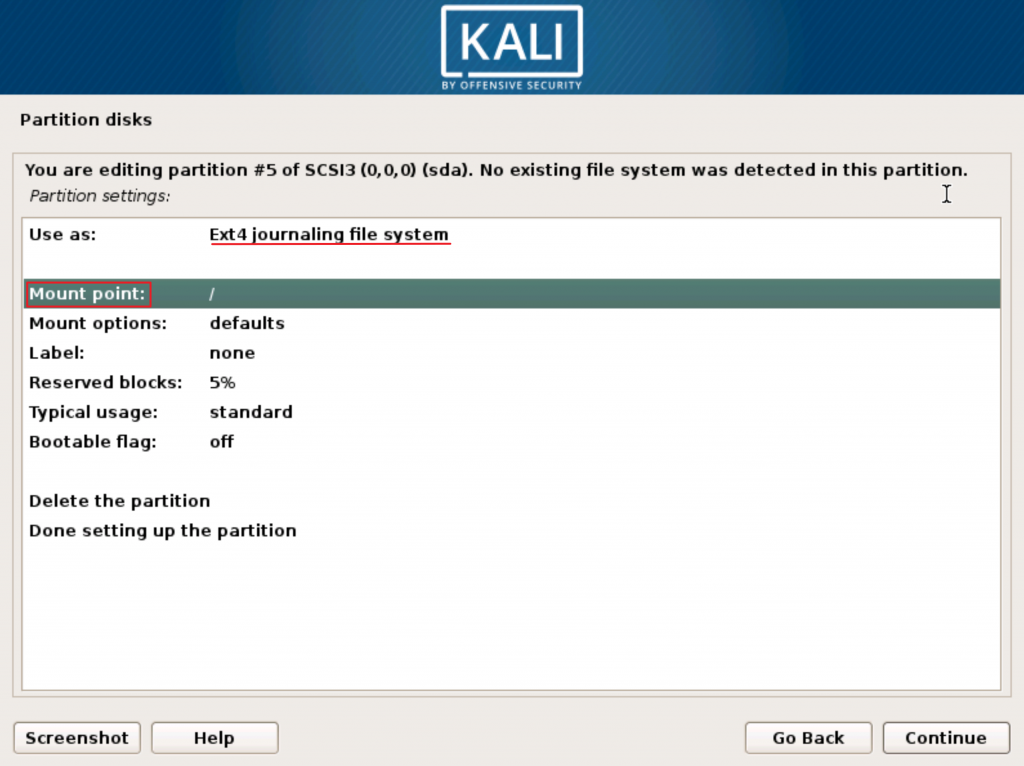

- #Kali linux how to use this partition what should i choose password#
- #Kali linux how to use this partition what should i choose Pc#
- #Kali linux how to use this partition what should i choose iso#
It should have two partitions: One that stores the Kali Linux 2021 operating system, and another persistence partition, which you created earlier. It’s very important that you identify your persistence partition correctly as we are going to overwrite it. You may see several entries for devices and partitions listed here. Open Terminal and use the root account with:
#Kali linux how to use this partition what should i choose Pc#
Reboot the PC and select Live USB Encrypted Persistence and press ENTER. If you currently have files and settings stored on the persistence partition, you must back them up before continuing with this process. If you want to protect your persistence partition with a password, you can do so with luksEncryption.īe warned, this process will overwrite your current persistence partition. Kali Linux 2021 Live Encryption (Optional) Note: From now on, every time you boot from USB, you must select Live USB Persistence in order for persistence to work correctly. To test if persistence is working correctly on Kali Linux 2021, try creating an empty test folder on the Desktop and restarting. Select Live USB Persistence and if the test folder is still there, persistence is working correctly.
#Kali linux how to use this partition what should i choose password#
For Kali Linux 2019 and below, the default user is “ root” and the password is “ toor”. However, if you do get a password prompt, the default username and password in Kali Linux 2021 is “kali”. The menu may look slightly different depending on your version of Kali. In the Kali boot menu, select Live USB Persistence and press ENTER. When the PC reboots, you should be presented with the Kali Linux 2021 Live boot menu. You may also have to disable Secure Boot in your BIOS in order to allow Kali to run. Repeatedly pressing one of the function keys ( F12, F2, etc) or the ESC or Delete keys on bootup will invoke the boot or BIOS menus on some machines, where you can select USB as the boot device. If this doesn’t work either, you may need to do some searching on how to boot from USB on your particular machine. If this doesn’t work and the PC boots straight back into Windows, hold down the SHIFT key while clicking Restart in the Windows start menu and select Boot from USB. On some PCs, you can simply restart the machine, and if the USB is plugged in, it should boot to Kali Linux 2021 Live automatically.
#Kali linux how to use this partition what should i choose iso#
It may take 10-30 minutes to write the Kali Linux 2021 Live ISO to USB depending on your hardware and size of USB.

If you see a warning about Syslinux, click Yes.


 0 kommentar(er)
0 kommentar(er)
